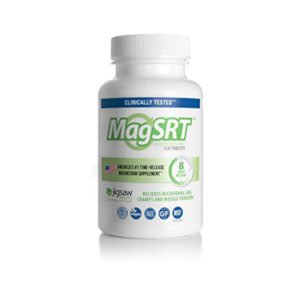The official COVID-19 death toll in the USA passed 160,000 in August 2020. With how terrifying this number looks, it’s hard to imagine the figures being less than the whole truth. However, the Centers for Disease Control and Prevention (CDC) quietly confessed in late August, that only a small fraction of these had COVID-19 as the sole cause.
What is really going on, and how can we stay safe?
The Truth About The COVID-19 Death Toll
The recently released data shows a far different picture to what we see in the mainstream media. For just six percent of the deaths, COVID-19 was the only cause mentioned. For the other 94 percent of recorded fatalities, there was an average of 2.6 additional conditions or causes per death. In many of these, COVID-19 may not have been the true cause of death. Where underlying conditions only contributed to turning the infection fatal, we can see who is vulnerable, and find better ways to stay healthy.
Some underlying conditions were more common than others. Over 35,000 had hypertensive illness, and more than 18,000 had ischemic heart disease. Alzheimer’s disease, or other dementia, was recorded in over 23,000 people; almost 26,000 had diabetes; and almost 14,000 had chronic lower respiratory diseases. Three-quarters of fatalities were in patients over 65 years old too.
In fact, the average age of death from COVID-19 is 75.5, three years below the USA’s average life expectancy. In contrast, 80 percent of deaths attributed to the swine flu pandemic of 2009-10 were in people under 65.
The CDC figures are similar to data from Italy, where 99 percent of patients whose deaths were recorded as COVID-19 had underlying conditions. Almost half had three or more chronic diseases. Three-quarters had hypertension, a third had heart disease and 35 percent had diabetes.
Over in the United Kingdom, there has also been concern over the official COVID-19 death toll. On July 17, an investigation was launched after many out-of-hospital fatalities were found to be people who recovered weeks or months earlier. Even if they died in a car accident, anyone who previously tested positive was automatically counted as a COVID-19 death.
How Many People Have Really Been Exposed To The Coronavirus?
Fatalities from other causes may not be the only cause of over-inflated mortality statistics. Professor John Ioannidis, an expert in epidemiology, says that the COVID-19 death toll is likely exaggerated by infections that go undetected:
The data collected so far on how many people are infected and how the epidemic is evolving are utterly unreliable. Given the limited testing to date, some deaths and probably the vast majority of infections due to SARS-CoV-2 are being missed. We don’t know if we are failing to capture infections by a factor of three or 300.
He adds:
This evidence fiasco creates tremendous uncertainty about the risk of dying from COVID-19. Reported case fatality rates, like the official 3.4 percent rate from the World Health Organization, cause horror — and are meaningless. Patients who have been tested for SARS-CoV-2 are disproportionately those with severe symptoms and bad outcomes. As most health systems have limited testing capacity, selection bias may even worsen in the near future.
More than Counted
Back in April, Ioannidis noted a much lower fatality rate on the Diamond Princess, where 19 percent of passengers were infected. One percent of infected passengers died, among a population skewed towards older age groups.
In a June interview, he mentions studies showing that anywhere between five and 600 times as many people have antibodies to the coronavirus than counted in official case statistics. Surveys in India have found the prevalence of antibodies to be as high as 57 percent, raising the possibility that herd immunity has arrived in some areas.
“The numbers are almost meaningless,” says Steve Goodman, a professor of epidemiology at Stanford University. He adds that there are a huge amount of people who have mild cases and would not likely seek testing. The rate of increase in positive results doesn’t just reflect spread of the virus, but also more testing.
Some COVID-19 risk factors may even influence the chance of testing positive for the virus. A survey of teenagers and young adults found that vaping raised their risk of being diagnosed with COVID-19 by five times. Those who both smoke and vape are seven times more likely to get a diagnosis, and nine times more likely to be tested. These figures were determined by their location and socioeconomic status. Both influence exposure to the virus and the ability to socially distance.
Natural Remedies For COVID-19 Risk Factors
Why do hypertension and cardiovascular diseases commonly accompany serious COVID-19 infections?
People with these conditions are commonly prescribed ACE inhibitor drugs. These increase expression of the ACE-2 receptors, which the coronavirus uses to enter cells. Essentially rolling out the welcome mat may lead to a more severe infection. Fortunately, there are many natural alternatives that can help normalize blood pressure and support overall cardiovascular health.
The DASH Diet
The Dietary Approaches to Stop Hypertension (DASH) diet is one method that has been used for many years. It is high in vegetables, fruits, nuts, and low-fat dairy, while being low in refined carbohydrates, sugar, cholesterol and red meat.
Its high levels of fiber and potassium are the major contributors to its benefits. A study combining the DASH diet with exercise three times a week, along with a cognitive behavioral weight loss intervention found a reduction in systolic blood pressure by 16.1mmHg, and an average 19.2 pounds in weight.
Magnesium
Magnesium may assist you by improving blood vessel function and possibly reducing inflammation. An analysis of seven trials found that magnesium supplementation can reduce systolic blood pressure by around 18.7mmHg, and diastolic blood pressure by 10.9mmHg.
In people with both diabetes and cardiovascular disease, there is a relationship between low magnesium and high blood sugar and tissue damage from unabsorbed sugar.
Coenzyme Q10
Coenzyme Q10 (CoQ10) is used in cellular energy production, protecting the heart and relieving hypertension. A review of CoQ10 supplementation found an average drop in systolic blood pressure of 11mmHg, and 7mmHg for diastolic blood pressure.
Additionally, a clinical trial involving 74 people with diabetes found reductions in both glycated hemoglobin, a measure of tissue damage from unabsorbed sugar, and blood pressure.
Curcumin
Curcumin, the most researched phytochemical in turmeric, may guard metabolic health too. A clinical trial of 240 people with prediabetes found that none of the curcumin-treated group progressed to diabetes over the nine-month period.
One in six people from the placebo group were diagnosed with type II diabetes during this time. The curcumin group also showed improved insulin sensitivity. It also improved beta cell function which is the type of pancreatic cell where insulin is made.
Risk Factors Matter
The COVID-19 death toll looks horrific on paper, but underneath the large numbers lies a more complex picture. Some people had underlying conditions and died of other causes. By acknowledging COVID-19 risk factors, we can take the steps to be in charge of our health. The truth does not make any of these deaths less tragic. Instead, the truth sheds light on how our overall health influences our vulnerability to infection.

Alexandra Preston is an Australian naturopath, passionate about empowering others to take charge of their health and healing the planet. Her special area of interest in natural health is antiaging; she also loves the beach and is a semi-professional dancer.
Submit your story or essay to Buzzworthy Blogs.
-
 Jigsaw Magnesium With SRT$22.97 — or subscribe and save up to 5%
Jigsaw Magnesium With SRT$22.97 — or subscribe and save up to 5% -
 Quicksilver Nanoemulsified CoQ10$50.00
Quicksilver Nanoemulsified CoQ10$50.00 -
Sale Product on sale
 Silver Excelsior Serum$99.99 – $272.22Rated 4.89 out of 5 based on 45 customer ratings
Silver Excelsior Serum$99.99 – $272.22Rated 4.89 out of 5 based on 45 customer ratings



